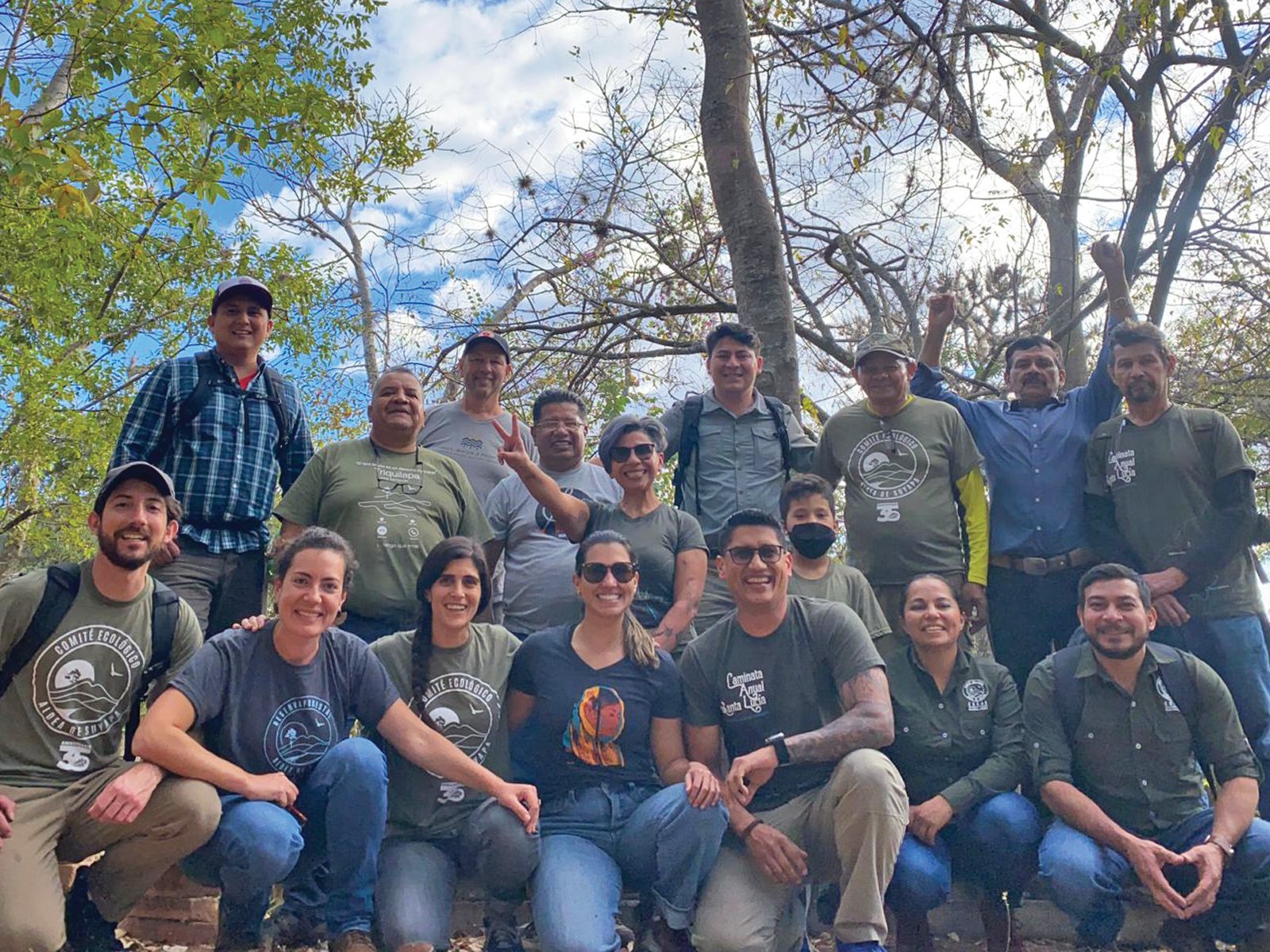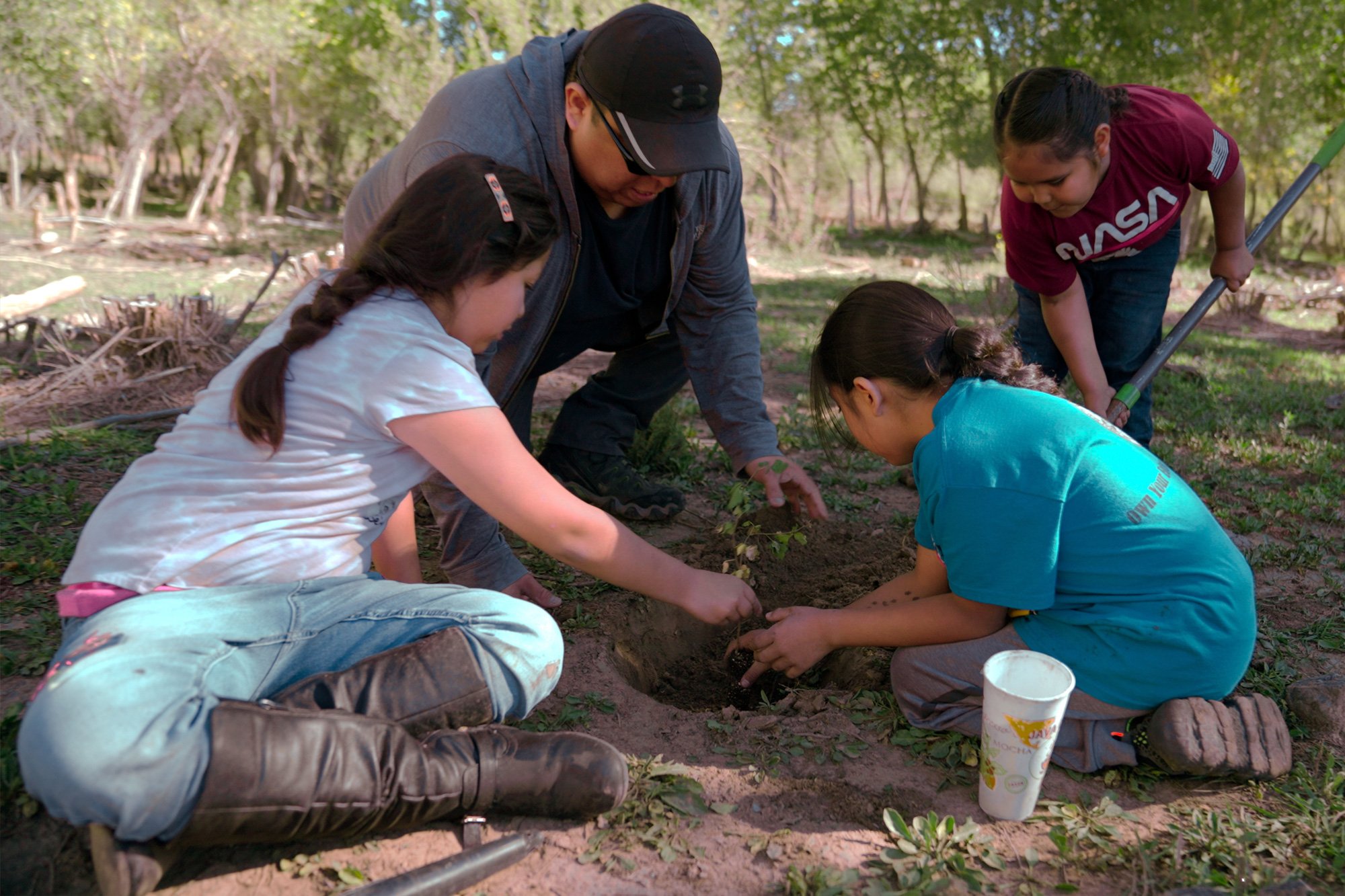
FORESTS FOREVER
Spring 2023 • Trees, Water & People Newsletter
What have we learned in 25 years?
A Letter from Sebastian Africano, Executive Director
Greetings from springtime in Colorado, where an above average Rocky Mountain snowpack is giving us hope for a strong restoration season. After years of record-breaking forest fires, this wet and cold winter is just what the doctor ordered.
This year is a refreshing milestone for Trees, Water & People, as we celebrate 25 years of improving lives by helping communities protect, conserve, and manage the natural resources on which their long-term well-being depends.
Our mission rings as true today as it did in 1998, and we’re doing the best work in our history.
So, what have we learned in 25 years?
Well, first we’ve learned that relationships are the key to everything we do, and that the people on our team are critical to producing the outcomes we seek. Only by building trust, credibility, and empathy does our work succeed on the ground.
We’ve learned that the only way to approach our work is with grace and persistence. At 25 years, we continue learning, improving, and having breakthroughs that would have never been possible without patience and a long-term outlook.
And of course, we’ve learned that TWP is only as strong as our network. TWP serves as a powerful connector of people and resources to create change. If you’re reading this letter, know that you’ve played a real role in meaningfully changing the course of someone else’s life.
The most gratifying moments of my 18-year career with TWP have been receiving validation from people that have found value in the services our programs provide. “Getting it right” feels good, because it shows we’ve listened, learned and acted on people’s true needs.
TWP’s staff is the most diverse, the most talented, and the most versatile in our history. This leads to better relationships with our partners, better coordination of our projects, and a more effective pursuit of our mission.
Your trust helps us attract and retain people who care for our planet, for our mission, and for the Indigenous communities of the Americas. We hope to continue earning your trust for our next 25 years of work.
Thank you for helping us build something special in Trees, Water & People.
Sebastian Africano
Executive Director
Trees, Water & People
Indigenous Sovereignty in Guatemala
by Daniela Bueso, Co-Director of the Central America Program
For centuries, Indigenous people all over Latin America have struggled with colonization, displacement, territorial rights, and reclaiming their Indigenous sovereignty. In Guatemala, the civil war (1960-1996), sparked the displacement of thousands of people across the country, forcing them to migrate to other neighboring countries. After the Peace Accords in 1996, many families returned from Mexico, where they had taken refuge. Upon their return, they found their lands were not reintegrated into their territories. This is how Utz Che’ was born, with groups of displaced communities that came together and applied to the Land Fund — a government organization focused on land access and sustainable development in Guatemala.
In 2011, over 100 displaced families self-organized to purchase a piece of land. These families came from the northern region of San Marcos and Huehuetenango, bringing an interesting combination of culture and language (Mam and Spanish), to build a community now known as “La Bendición,” Spanish for “The Blessing.” Today, approximately 75 families reside in La Bendición, and the community continues to stand out for its strong leadership and capacity for self-management. These families undertook the task of looking for arable land in order to
settle and start a new life. They strengthened themselves and managed to gain the support necessary to gradually change the community and make it more habitable.
After multiple years of fighting, La Bendición hit a huge milestone in June 2022, when they finally celebrated resolving the payment of the agrarian debt of the territory they have occupied and owned since 2001. This has been a process of community struggle and perseverance for access to land in Guatemala where conditions have represented challenges, sacrifices, and the exercise of rights. Now, the Communal Forest has a territorial extension of 569.6 hectares, adjacent to four local farms with multiple uses.
Now, the people of this community are able to reap the benefits of protecting the soil, watersheds, trees, flora and fauna, and they finally have the rights to self-determination, autonomy, and legitimacy as a sovereign community. At last, the people of La Bendición have regained their culture, language, social and legal systems, political structures, and relationship with their land.

“Regarding the land, it is a relief to know that it is ours.
Regarding the forest, it is life, because we, the community, have that relationship between community and the forest.
We defend it, and we do work, we make firebreaks,
and we take care of it, not because others incentivize us to do so, but because of the relationship that the community and people have with the forest.
We know that from there we have water, we have air,
and the forest is life for us in La Bendición, as women,
and as inhabitants of the community.”
– Lesbia Perez
La Bendición community leader
Involving and Empowering Local People
by James Calabaza, Indigenous Lands Program Director
I always ask myself, what’s better than a successful restoration project? Well for me, it’s the idea of involving and empowering local people directly into the work and then gaining positive outputs that lead to a higher standard of living. It’s a practice that is based on reciprocity and aligning common values for the long-term well-being of communities and their people. But it’s not an easy practice due to the history of Tribal communities being oppressed.
In the United States, Tribes have faced countless years of economic, cultural and social challenges that have affected the opportunity for their communities to grow and thrive. The insertion of American governmental systems and ideologies has left many Tribes in a position where their communities and people are under resourced and under valued. This leads to poor economic growth, no management of ancestral lands, high rates of health issues and a reluctancy to engage with outside groups. But this doesn’t stop the people from giving up, instead, it breeds in them the ability to become more resilient and stronger. A friend from the Pine Ridge Reservation in South Dakota once said, “they made it tough for Natives to survive, that’s why you gotta be tough.” As a Native American myself, I can’t think of any truer words spoken.
Understanding these systemic oppressions is a vital component to truly recognizing how these issues are still affecting Tribal communities today. Even though TWP’s efforts are focused on local small-scale, community -centered projects, it deeply touches on the importance of relationships and investing in local efforts that bring resources and opportunities to these communities. We facilitate local stewardship projects, which help create seasonal jobs and volunteer days where people can come together to steward the land, share stories and participate in work that they can be proud of. But more importantly, I hear words and stories from people about how these projects instill internal happiness and prosperity as they work to preserve and protect their cultural lifeways.
I reminisce about the joyful times I’ve had serving Tribal people searching for a more dignified life, I’ve considered myself fortunate to be part of these people’s lives. But I don’t want it to stop here. Let’s continue to craft smiles, partake in laughter, develop friendships and participate in community events so that we may all live dignified lives.
TWP’s Five Community-centered priorities
This year, Trees, Water & People (TWP) celebrates 25 years of creating environmental, social, and economic impact for
frontline communities most affected by climate change.
By building trusting relationships, designing collaborative
programs and partnerships, and securing resources to turn ideas into action, we ensure that local communities and
organizations receive the support they need to advance
climate justice objectives locally.
Our work is guided by 1) the communities we serve, 2) the individuals and organizations that fund our mission, and
3) the staff and partners who carry out the work. We seek to balance the interests and priorities of each group, knowing
that all are necessary to achieve our mission.
Together we center our work on five community-centered priorities: Dignified Livelihoods, Environmental Stewardship, Gender Equity & Inclusion, Indigenous Sovereignty and Youth Development. These all feed into our vision of a world where climate justice, equitable economic development and resilient communities are valued and have the space to thrive.
Dignified Livelihoods — helping create work opportunities that people can be proud of and that contribute to a higher standard of living.
Environmental Stewardship — continually improving the way we care for, use, and protect natural resources to enhance biodiversity.
Gender Equity & Inclusion — creating conditions for women to rise into leadership roles in our programs and within our organization.
Indigenous Sovereignty — ensuring Indigenous voices are heard and respected in decisions that affect their people and territories.
Youth Development — acknowledging that the next generation will inherit the earth, and need to be involved in its
care today.
When you support TWP, you’re contributing to each of these important priorities, as they are each woven into the work we do daily. Stay tuned as we share how we put each of these into practice and work to be an exemplary nonprofit organization in service of people and planet.









When facing a challenge as urgent and far-reaching as climate change, it’s natural to look for seemingly efficient, single-issue solutions. At Trees, Water & People, we’ve learned that the most effective climate action is just the opposite—it grows outward, addressing environmental challenges alongside health, quality of life, and community resilience.